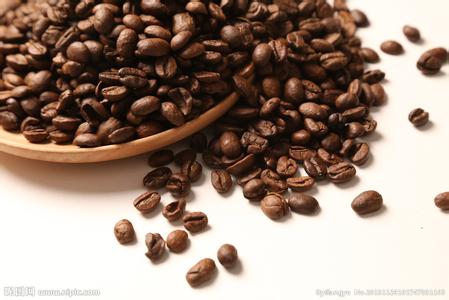Description of the taste of Yejia Coffee Coffee introduction to the manor of variety producing area by grinding scale treatment
Description of the taste of Yejia Coffee Coffee introduction to the manor of variety producing area by grinding scale treatment
Coffee trees are mostly planted in farmers' own backyard or mixed with other crops in the field, the yield per household is not much, it is a typical rural coffee. Yega Xuefei won the prize beans almost from the above-mentioned coffee villages and communities. The so-called "Yega Chuefei" refers to the strong aromas of jasmine, lemon or lime acid, as well as peach, almond or tea. The phrase "coffee entrance, flowers in full bloom" is best described, just as flowers promote the comfort of taste buds and olfactory cells in the nasal cavity. In addition to the fragrance of flowers, the delicate thickness of body, like silk massage in the mouth, feels wonderful. At present, many coffee chemists begin to study the microclimate and soil and water around Yega Xuefei, in order to sum up the planting equation of fine coffee. Yega Xuefei is a by-product area of Sidamo province in Sidamo, Ethiopia, located in the northwest of Sidamo, with a mountain with a lake, is one of the highest coffee-producing areas in Ethiopia. However, the mode of production and flavor here are so outstanding that Ethiopian coffee farmers compete to be proud of the flavor of their coffee, so they are independent from Sidamo and become the most famous producing area in Africa.
1. When picking beans, only fully ripe crimson coffee cherries are picked. Before exposure, the beans will be screened for defects in the processing plant to make the beans look more average in size and maturity.
two。 Next, use tall wooden frames or whole scaffolding for the sun to avoid the risk of beans smelling on the ground. In the process of exposure, take good care of the beans so that the coffee beans can be evenly exposed to water; every three to five days, coffee workers will manually screen out defective and moldy beans. Therefore, by the time the exposure is completed, before the beans enter the market to remove the peel and flesh, a bright crimson coffee cherry is already a grade with few defects.
The Red Cherry Project (Operation Cherry Red), led by the Dutch trading company Trabocca BV and partly funded by the Dutch government, has been a small-scale farm quality improvement project since 2005. This project, which enhances coffee production and quality in remote areas of Ethiopia by providing producer expertise and related technology assistance, has been selected since 2005 for small coffee cooperatives at high elevations in Sidamo, Yegashev and Lim. Encourage and assist producers to improve the quality of coffee through testing (professional cup testers are also stationed in coffee producing areas) to ensure the quality of each batch by improving washing, semi-washing, solarization or other experimental treatments as far as they can. Before the harvest season, Trabocca invites selected smallholder organizations / producers to participate in the production of micro-batches of coffee (about 1500 to 3000 kg), carefully picking 100% ripe red coffee cherries by hand (hence the name Red Cherry Project).

Important Notice :
前街咖啡 FrontStreet Coffee has moved to new addredd:
FrontStreet Coffee Address: 315,Donghua East Road,GuangZhou
Tel:020 38364473
- Prev

Grinding scale of Hartmann Water washed Rosa Coffee beans in Brazil
Grinding scale of rose summer coffee beans washed in Hartmann, Brazil. Introduction of manor varieties. Panama Manor in Panama: Lelida plot 10 Lerlda Estate Lot10 treatment: White honey treatment Honey varieties: Kaduai Catuai score and cup test CuppingScore:87 lime,floral coconut,clean,sparkling,mediumbody lime, coconut
- Next

Introduction to the production method of Yejiaxuefei siphon pot, the description of taste and flavor, the production area of manor varieties.
Yega Xuefei siphon pot production method characteristics taste flavor description of manor varieties (1) Caramelization reaction: the sugar in coffee beans is caramelized at about 170-200 ℃, which is exactly the melting point of sucrose (185 ℃) and the temperature of the first explosion stage when coffee beans are roasted. The product of caramelization is divided into two parts: 1. The dehydration product of sugar is caramel or sauce 2. Pyrolysis production
Related
- Detailed explanation of Jadeite planting Land in Panamanian Jadeite Manor introduction to the grading system of Jadeite competitive bidding, Red bid, Green bid and Rose Summer
- Story of Coffee planting in Brenka region of Costa Rica Stonehenge Manor anaerobic heavy honey treatment of flavor mouth
- What's on the barrel of Blue Mountain Coffee beans?
- Can American coffee also pull flowers? How to use hot American style to pull out a good-looking pattern?
- Can you make a cold extract with coffee beans? What is the right proportion for cold-extracted coffee formula?
- Indonesian PWN Gold Mandrine Coffee Origin Features Flavor How to Chong? Mandolin coffee is American.
- A brief introduction to the flavor characteristics of Brazilian yellow bourbon coffee beans
- What is the effect of different water quality on the flavor of cold-extracted coffee? What kind of water is best for brewing coffee?
- Why do you think of Rose Summer whenever you mention Panamanian coffee?
- Introduction to the characteristics of authentic blue mountain coffee bean producing areas? What is the CIB Coffee Authority in Jamaica?

